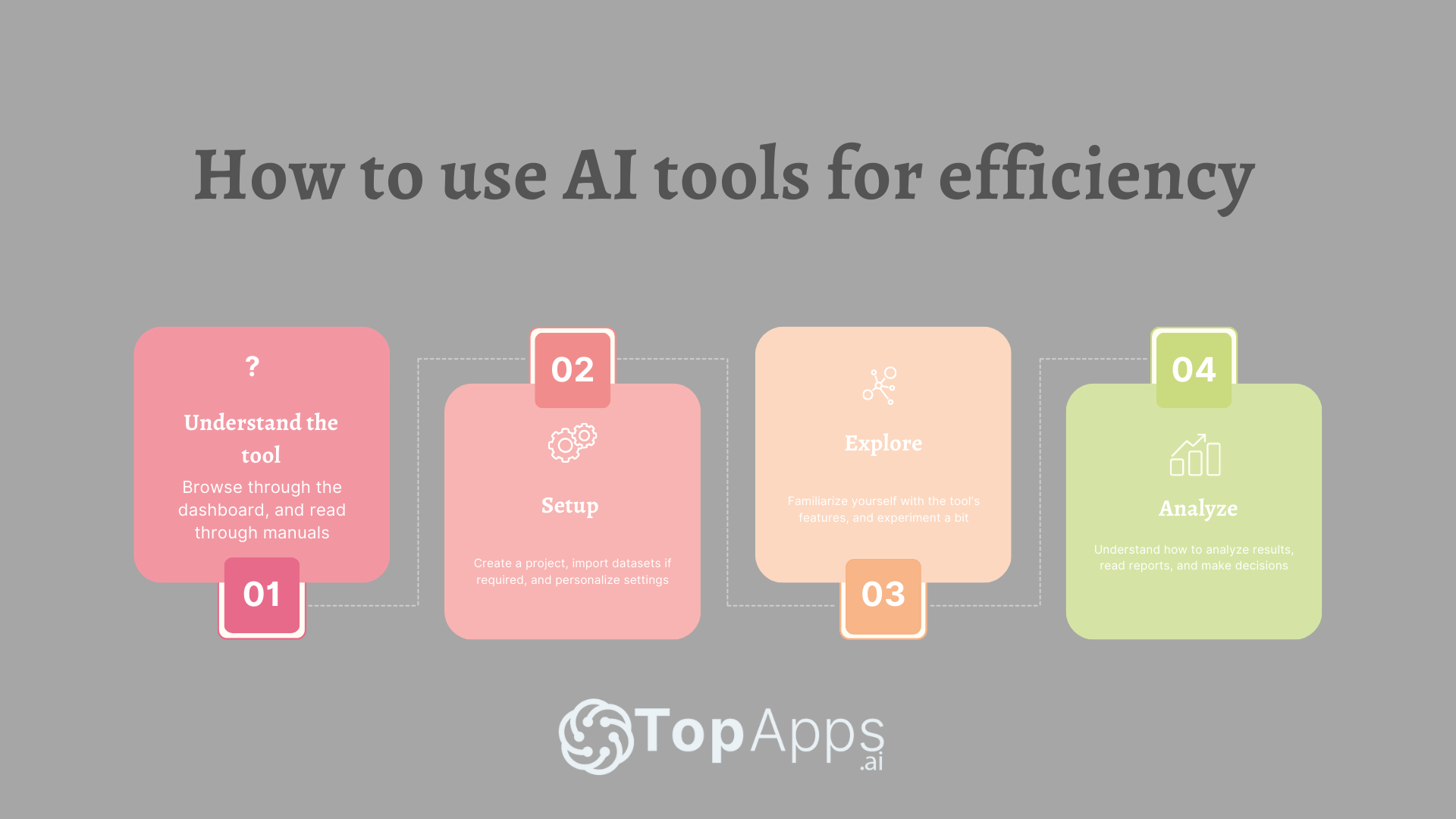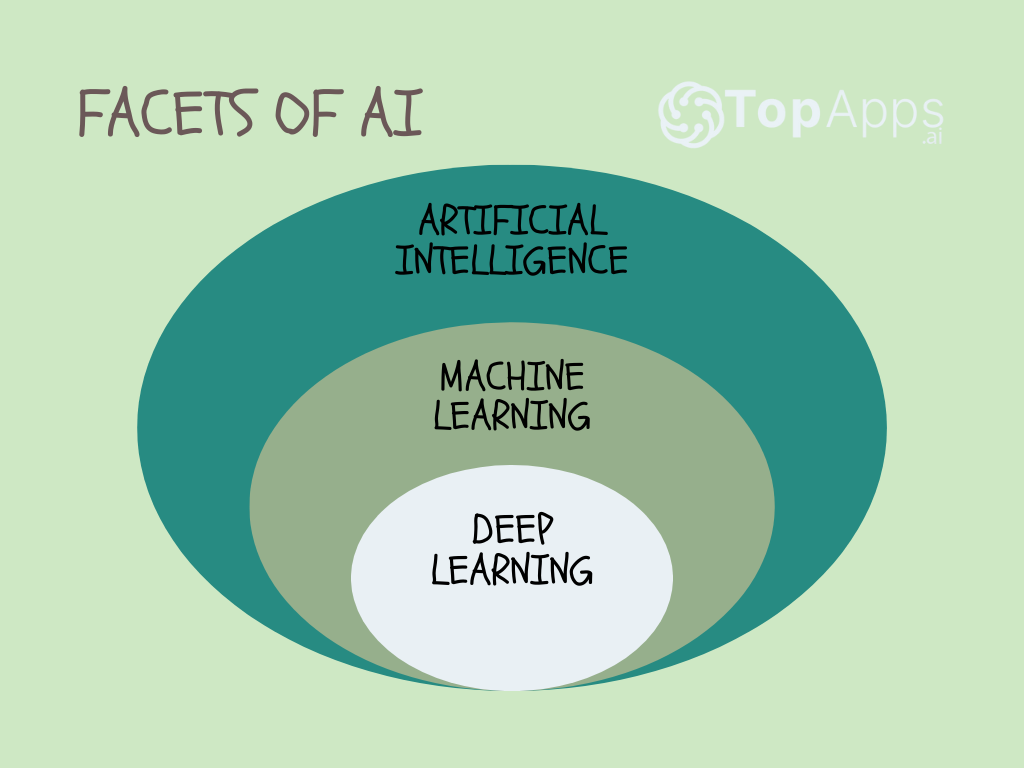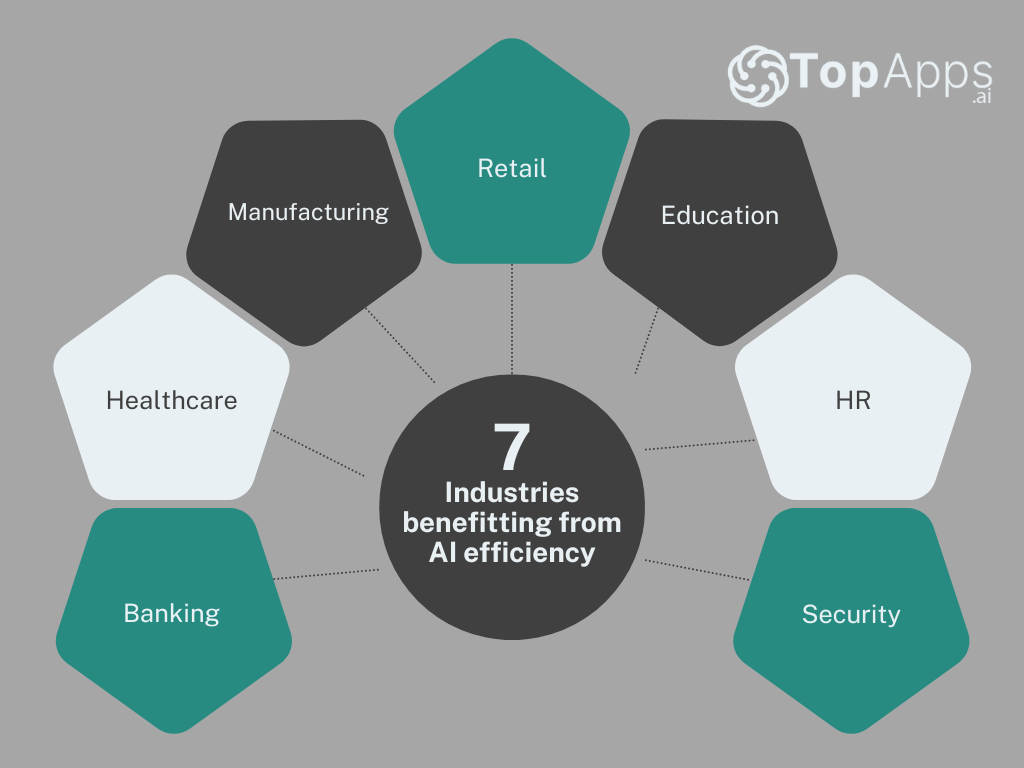Published on: March 6, 2024
Boost your efficiency with AI – No prior tech knowledge required
Author: Amy Lancelotte

Efficiency is no longer about multi-tasking. It’s about delegating tasks without hiring an army of assistants. Unleash the power of Artificial Intelligence (AI) and watch your productivity skyrocket. No coding degree or tech geek status required.
Remember the chess match between Garry Kasparov and IBM’s supercomputer Deep Blue? A momentous event that unveiled the prowess of AI in 1997. Fast forward two decades, AI isn’t just playing games; it’s making our days more productive, ensuring we get the job done faster, better, and smarter.
Whether you’re running a multinational corporation or a one-person startup, AI is your secret weapon. Your modern-day Jeeves, only unquestionably accurate, tirelessly efficient, and available round-the-clock. Enjoy the journey as we streamline your everyday tasks with AI, making efficiency second nature. Buckle up, it’s time to power up your personal and professional life with a tech-savvy, yet user-friendly aide. “AI” isn’t just for robots anymore.
Unleashing the power of AI: A beginner’s guide
- A clear understanding of how AI works and boosts efficiency.
- The importance of familiarising oneself with AI, even without a tech background.
- Concrete real-life applications of AI’s potential.
Understanding AI and its potential for efficiency
Artificial intelligence, commonly referred to as AI, is not a distant and elusive concept. It has begun to underpin many aspects of daily life, enhancing the efficiency of mundane tasks. From smart home appliances to intricate business operational tools, AI’s presences are seen, felt, and greatly appreciated.
But what is AI exactly? In simple, non-technical terms, AI is a sum of technologies that enables machines to learn from experience, adapt to new inputs, and perform tasks commonly associated with human intelligence. Think language translation apps, voice-activated personal assistants, etc.
As a tool, it unlocks unbelievable efficiency. Imagine a meeting scheduler that knows your preferred meeting times and automatically finds an agreeable slot for all attendees. That’s a productivity booster right there. AI-based tools can learn patterns, adjust to changes, and automate processes to improve speed and accuracy.
The importance of learning AI for non-tech individuals
Why should a business professional learn about AI, especially those not in tech-related fields? That’s a fair question. To answer that, let’s consider a key factor – the evolving business landscape. Technology, AI included, isn’t just about coders and IT departments anymore. It’s ubiquitous, it’s integrated into virtually all business aspects.
A working knowledge of AI is becoming increasingly valuable, regardless of job role or industry. Why, you ask? Here’s the reality. AI is shaping decision-making, driving operational efficiency, and pioneering customer services. Being AI-literate drastically changes the way you understand your work, make decisions, and navigate your professional path.
The exciting part? No previous technical knowledge is required. Many platforms offer intuitive interfaces and user-friendly toolkits – all designed with the non-tech expert in mind. They empower you to understand the application without needing to comprehend the underlying code. Now, even novices can automate complex tasks and use AI systems to avoid the more time-consuming tasks in their schedules.
Real-life examples of AI improving efficiency
Let’s talk impact: how is AI practically improving efficiency in real life? Consider the pop-up suggestions when you type into Google’s search bar. That’s AI predicting what you might be searching for, based on previous searches, trending topics, and popular queries related to your phrase.
In customer service, chatbots efficiently handle basic inquiries. They provide real-time assistance, enabling customer service representatives to focus on more complex tasks. In risk management, AI algorithms can detect potential fraud or cybersecurity threats faster and more accurately than human analysis.

AI has seeped into HR too, streamlining recruitment processes. AI-powered tools sift through hundreds of resumes in a fraction of the time it takes a human to do it, identifying the best fit based on predetermined criteria.
These are just a smattering of examples. In fact, there is hardly an industry untouched by the efficiency-boosting capabilities of AI.
These insights should help lay a foundation for how Artificial Intelligence can be the game-changer in driving efficiency, even for individuals with no prior tech knowledge. As the prevalence of AI increases, harnessing its potential becomes not just an advantage, but a necessity.
Top AI tools for boosting efficiency
Efficiency is no small feat in the business world. Democratization of Artificial Intelligence has led to an array of tools that address this challenge. Here you get an insight into these hand-picked tools which have been fine-tuned to boost efficiency.
- Learn about popular AI-based tools.
- Know how to choose the right AI tool for your needs.
- Step-by-step guide to using the tools.
Overview of popular AI tools for efficiency
AI tools are integral in automating and expediting processes. Efficiency doesn’t just involve time-saving but also resource utilization, error minimization, and data processing.
- Motion: It’s an automated scheduling tool that takes the hassle out of planning your day (or month).
- Grammarly: An AI writing assistant that helps in creating error-free content significantly cutting down editing time.
- Einstein Analytics by Salesforce: Analyzes significant volumes of data for critical insights, optimizing the decision-making process as part of sales.
Knowing about all these impressive AI-based tools is just the half of it. Choosing a tool that aligns with your needs is equally essential.

How to choose the right AI tool for your needs
Selecting an AI tool is not one-size-fits-all. Here’s how to ensure an AI tool is the right fit for your needs:
- Prioritize needs: Identify the processes that need streamlining.
- Define Goals: Determine what you want to achieve with the AI tool.
- Leverage Free Trials: Most of these platforms offer free trials. Use them to evaluate usability, effectiveness, and ROI.
- Evaluate Customer Support: Strong customer support is crucial for seamless adoption.
The use of a tool is only as effective as the person who wields it. Here’s a step-by-step guide to using AI tools.
A step-by-step guide to using AI tools for efficiency
AI tools are designed to be user-friendly but may still appear intimidating to beginners.
- First Steps: Understand the tool’s interface. Browse through the dashboard, and read through manuals.
- Setting Up: Create a project, import datasets if required, and personalize settings.
- Getting Around: Familiarize yourself with the tool’s features, and experiment a bit.
- Analyzing Results: Understand how to analyze results, read reports, and make decisions.
The information you just consumed breaks down some key elements to boosting efficiency using these types of tools, equipping you with the necessary knowledge to expedite your processes. In the world of artificial intelligence, knowledge is not just power – it’s efficiency.

Improving productivity with AI: A practical approach
- Streamlines tasks and workflows with AI.
- Solid examples of businesses using AI to boost productivity.
- Tactics for weaving AI into day-to-day work for higher productivity.
How AI can streamline workflows and processes
Harnessing AI’s power breathes new life into cumbersome tasks in the workplace. The crux? It eliminates menial work, allowing businesses to focus more on strategic decisions. AI has an innate capacity to process, analyze, and interpret vast amounts of data. As such, it spotlights areas of inefficiency and proposes smart solutions that otherwise might take months.
Identifying repetitive tasks is one way AI aids businesses. From here, AI can either automate or optimize these tasks. The result? A marked decrease in errors, speedier task completion, and a notable boost in productivity. For instance, AI-powered tools, like project management software, offer intelligent task delegation, streamlining workflow and freeing up invaluable time.
Emails are another domain where AI shines. AI applications such as X.ai and Clara are designed to manage meeting schedules, reducing time spent on arranging meetings. By taking care of such routine tasks, AI helps employees focus more on creative and critical tasks.
Case studies of businesses improving productivity with AI
AI adoption is no longer the exclusive domain of tech giants, every industry is now getting a taste of it. Let’s look at a few companies with tremendous productivity gains from implementing AI.
One notable example is Starbucks. They leverage AI to optimize their workflow and enhance the customer experience. Their AI application, called Deep Brew, helps forecast staffing needs, plan inventory, and even suggest personalized offers to customers. As a result, employees have more time to focus on their primary task – making delicious coffee.

Another success story is AI implementation by JPMorgan Chase within their contract review process. Traditionally, it would take countless legal hours to analyze legal contracts. With their AI program, COIN, which stands for Contract Intelligence, they’ve drastically cut down the time spent on contract analysis. The program can review documents and ascertain relevant details in seconds, which otherwise would over 360,000 hours.
Tips for integrating AI into your daily routine
Infusing AI into daily operations might seem complex, but it doesn’t have to be. To leverage AI to its full potential, it’s essential to start small and gradually scale up. A first step could be adopting AI-powered tools that can manage your inbox or streamline scheduling.
Next, identify repetitive tasks within your schedule. These are ripe targets for an AI makeover. AI thrives on data, so feed it a steady supply of information to enable it to learn and make relevant predictions. Then AI can easily help with automating repetitive tasks to save lots of time.
Lastly, never underestimate the communication strengths of AI. Tools like Grammarly and Hemingway Editor utilize AI to vastly improve your written communication. They do it by optimizing content for conciseness and readability while also eliminating errors. Investing in such AI tools can free up time, alleviate stress, and ultimately boost productivity.
If you’re a content creator or just love to post to your personal social media accounts, generative AI tools can help with everything from new content to eye-catching and even deepfake images and videos.
AI in business: Driving efficiency and innovation
- AI brings unmatched efficiency to modern business operations.
- Adopting AI can lead to innovative business approaches, enhancing competitiveness.
- The latest trends further integrate AI and business efficiency.
The role of AI in modern business operations
Embracing AI isn’t just a trend; it’s transforming the way businesses operate. AI, with its ability to automate operations and make data-driven decisions, has made organizations more productive, agile, and cost-effective.
AI’s power lies in its ability to take over repetitive tasks, freeing up human resources for tasks requiring creativity and strategic thinking. By doing this, it boosts overall team productivity and, in turn, business efficiency.
Simultaneously, AI-powered predictive analytics can forecast business trends, anticipate customer needs, and advise on optimal business decisions, giving companies a remarkable advantage in their industry.
AI has evolved from merely being a novelty to a defining factor in operational efficiency. For example, consider how an AI-driven inventory system can optimize stock levels and prevent overstocking or running out of stock scenarios. This minimizes wastage, improves customer satisfaction, and ultimately enhances business efficiency.
How AI can lead to business innovation and competitiveness
Commercial competitiveness in today’s market goes beyond cost savings. The need for business innovation is now more crucial than ever, and that’s where AI steps in. It fosters the development of unique products, personalized marketing campaigns, and exceptional customer experiences.
Take, for example, AI-powered chatbots that provide personalized customer service round-the-clock. They’re transforming customer experiences, giving businesses a significant edge in customer retention and loyalty.
With data being the new oil, AI’s role in harnessing it, from customer insights to predictive market trends, is crucial in giving businesses a competitive edge.

Future trends in AI and business efficiency
As AI technology advances, its application in business is set to skyrocket. The rise of AI will drive future trends, creating more efficiency and opportunity. Predictive analytics, automation, and more intelligent business processes are just the tip of the AI iceberg.
With AI’s adaptive learning abilities, companies can not only anticipate changes but adapt to them almost instantaneously. This capability to predict, adapt, and improve will lead businesses into a new era of efficiency and success.
So, whether it’s streamlining operations, fostering innovation, or ensuring competitiveness, AI’s role in business efficiency holds immense potential. As its influence grows, one thing is certain – businesses can no longer afford to ignore AI. But more importantly, embracing AI is an exciting journey that has just begun. So buckle up, because the ride only gets more exciting from here.
The benefits of AI
- Understanding AI versus machine learning (ML)
- Enhancing efficiency with ML
- Tangible impacts in today’s world
Understanding the difference between AI and machine learning
AI and ML are two barrier-breaking technologies. Often used interchangeably, they indeed serve different functions. AI is the broader concept of machines capable of performing tasks like humans. Think of AI as the wide-ranging umbrella under which ML is a subset. Machine Learning, on the other hand, is an AI application that enables these machines to learn from experience, gradually making them smarter.
Casting light on these differences, one might think of AI as the goal of achieving human-like intelligence. Machine Learning, however, is the means to the end – the technique used to feed data into systems to help AI reach its full potential.
How machine learning contributes to AI efficiency
The neural pathway in Machine Learning feeds data to AI, making it an instrumental part of the entire system. Machine Learning, with its data analysis algorithms’ prowess, automates building models or the ‘brain’ of AI systems. This automated data modeling is essential to feed high-quality, predictive data into AI systems, making them intelligent and efficient.
These algorithms are designed to learn and improve over time, generating valuable insights and decisions based on data patterns. They form the backbone of cutting-edge AI technologies. From simpler things like optimizing your search engine results and your social feed to critical applications like AI-based medical diagnosis and autonomous driving, Machine Learning is what is making AI systems efficient AND smarter over time.

Real-world examples of AI and ML benefits
The global business landscape is significantly altered by AI and Machine Learning. Let’s look at a couple of examples to understand their impact better.
One notable instance is the customer service industry. AI-powered tools assist firms in managing customer interactions effectively and efficiently. With ML, these tools can predict customers’ preferences and purchase habits, enhancing communication and boosting sales. AI-powered analytics tools can also help identify patterns in customer behavior and demographics.
Another dramatic effect can be seen in the healthcare industry. Using AI and ML algorithms, radiologists can now detect tumors in early stages with heightened accuracy. The AI system is ‘trained’ over time to make these detections, significantly reducing human error and improving patient outcomes.
While these are just a few examples, numerous other sectors are leveraging these technologies to drive efficiency, boost productivity, and foster innovation. AI can help in something as simple as automating routine tasks to high-powered cancer detection. It’s fair to say that AI is the new catalyst fundamentally transforming the way businesses operate.
Embracing data-driven AI for maximum efficiency
- The value of data in AI effectiveness
- Enhancing results with data-driven AI
- Real-world instances of successful data-driven AI usage.
The unquestionable role of data in AI efficiency
Data’s importance is paramount when it comes to AI efficiency. The day-to-day operations of businesses are teeming with invaluable information, whether it’s related to sales transactions, customer behavior, or internal process milestones. When appropriately harnessed, this data can be the fuel that drives AI models, enhancing their predictive capabilities and elevating overall business efficiency.
AI is akin to a gourmet chef, and data is the high-quality ingredients needed to create a culinary masterpiece. Feeding AI with relevant and diverse data allows it to learn, adapt, and produce results with an accuracy that can transform how a business operates.
Maximizing output with data-driven AI
Implementing AI isn’t just about introducing sophisticated technology into your business. It’s about creating an advanced synergy between your processes and data-driven AI. Leveraging AI means aligning it with data sourced from customer interactions, financial transactions, social media feeds, and a ton of other operational aspects.
Data-driven AI can automate mundane tasks, freeing up human resources to concentrate on value-adding activities. Additionally, it can provide unprecedented insights into patterns, trends, and correlations that can forecast future occurrences or uncover business opportunities.
Successful implementation of data-driven AI systems
When it comes to the practical applications of data-driven AI, there is no shortage of impressive success stories across different sectors.
In the healthcare sector, for example, data-driven AI is increasingly used to predict health occurrences based on patient records, lifestyle habits, and genetic dispositions. Not only does this help in early diagnosis and personalized treatment plans but also in preventing health crises, enhancing patient care, and ensuring efficient use of resources.

On the other hand, retail businesses consistently leverage data-driven AI to deepen their understanding of customer behavior, enabling them to forecast demand trends, personalize customer communication, and optimize pricing strategies effectively.
As we shape our future business landscape, data-driven AI will be a key cornerstone, promising an efficiency revolution that no business can afford to ignore.
Embrace AI, elevate efficiency
You’ve learned how easy it is to bring AI into your operations, regardless of your tech-savviness. Imagine the ease of streamlining tasks, achieving better accuracy in forecasting, and ultimately, a more efficient business with minimal effort.
Embarking on this AI-integration journey could be the best decision you make for your business. Your productivity could soar, your costs could drop, and your professional growth might be incredible. Don’t shy away because of a lack of tech knowledge; instead, welcome this game-changing opportunity.
Time to wrap your head around your first AI project. Start with a small task, one process that could be automated easily. Measure the change in productivity and efficiency, this will give you a real sense of how AI can impact your business.
Now, what’s one area in your business you think an AI assistant could handle well?
Amy Lancelotte
TopApps writer
Recent Articles

Artificial Intelligence (AI) is everywhere, but for many, it remains a mystery. What exactly is AI, and how does it impact our daily...
Read More
In 2024, adaptive AI assistants are revolutionizing how we interact with technology. These intelligent agents learn from your habits, preferences, and context to...
Read More
Struggling to keep up with the competition in 2025? You’re not alone. Small and medium enterprises (SMEs) are facing a rapidly evolving business...
Read More